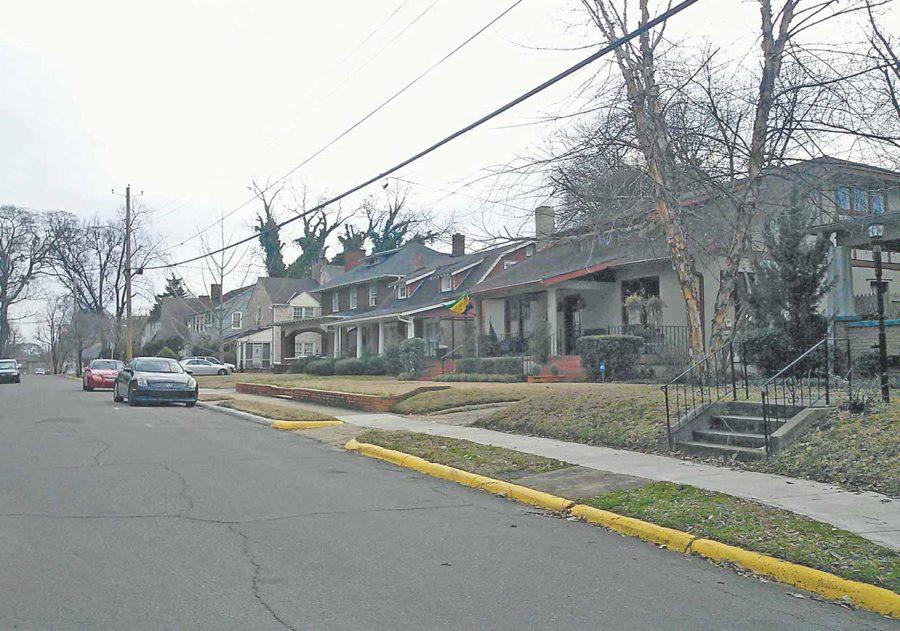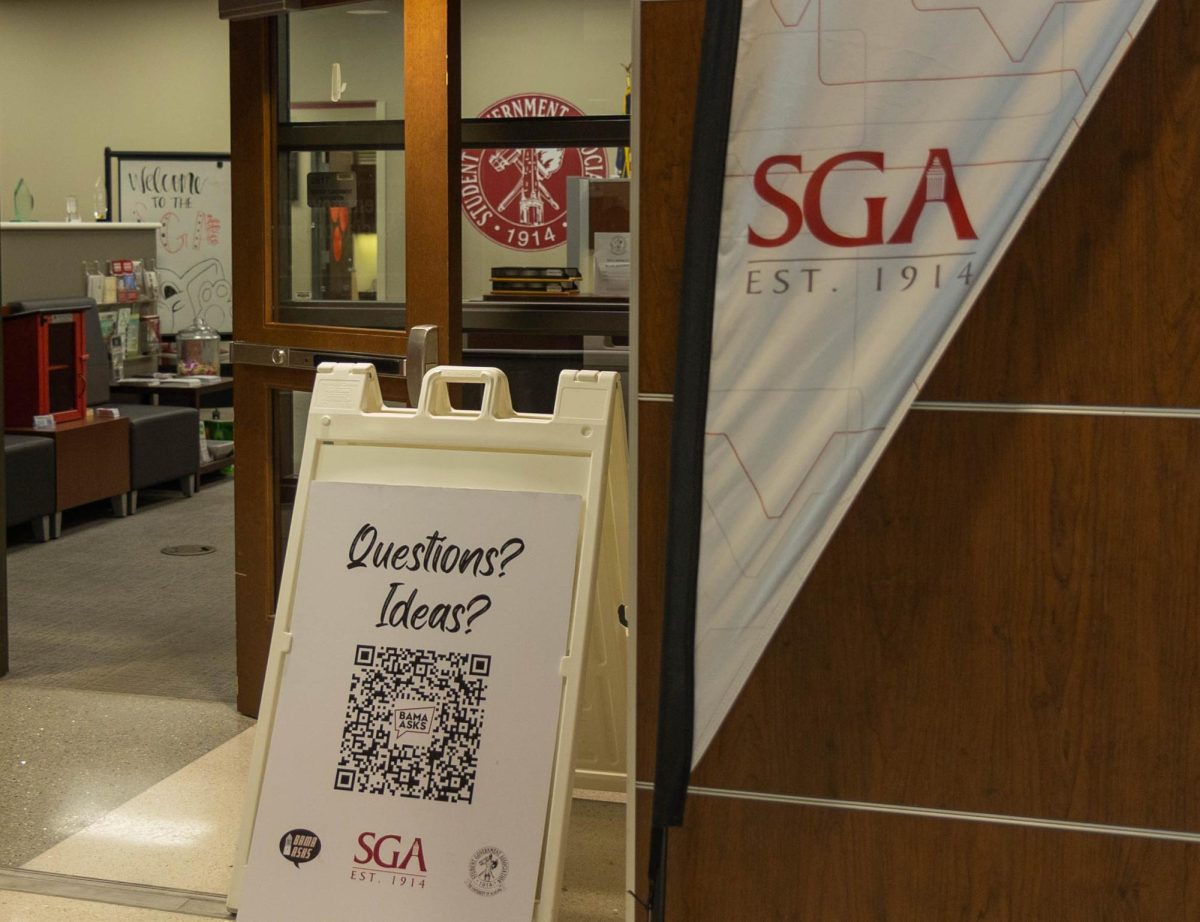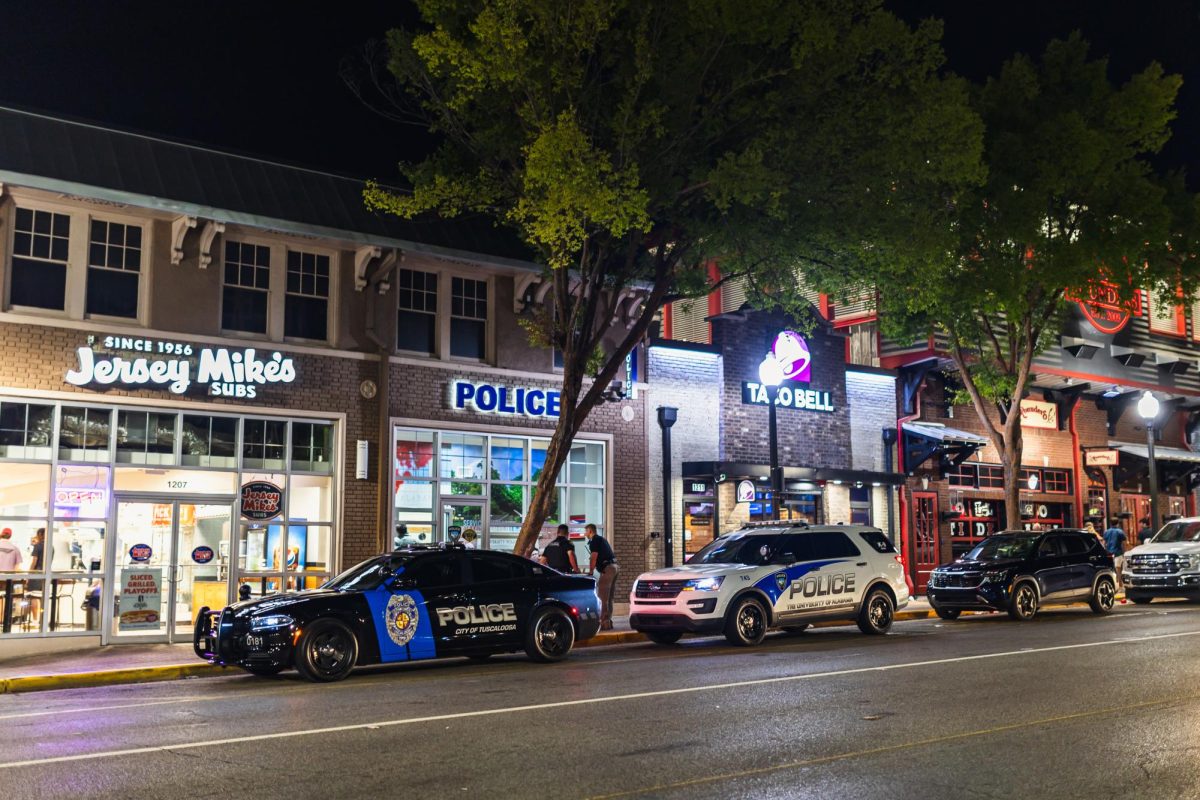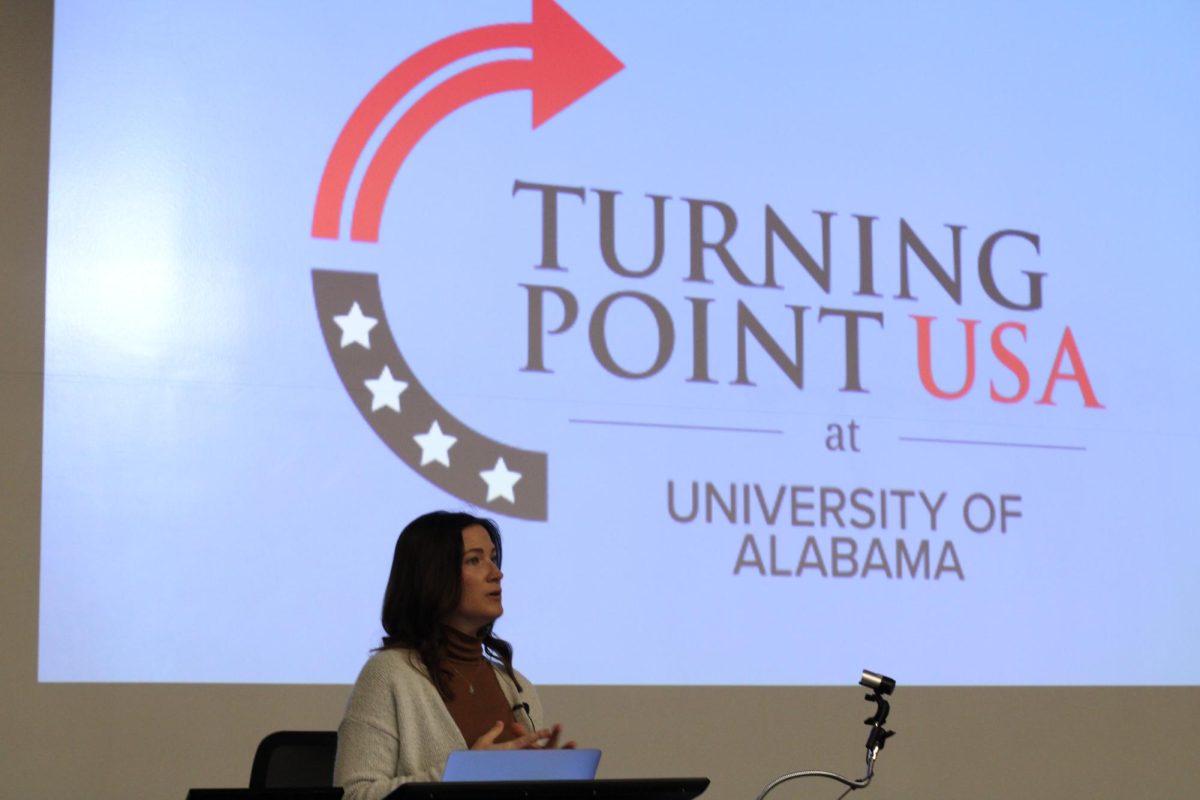Linda Ford knows all the dogs in her neighborhood. She lives with her husband, University of Alabama clinical lecturer David Ford, in a historic house on 7th Street. Her neighborhood is, at times, home to feral cats, raccoons, the odd stray beaver, dogs and their owners – most of whom are students.
When the Fords first moved to the house, they researched ordinances and demographics for the house. The woman who never thought she would live this close to campus, whose son was astonished by his parents’ new housing choice, can now see Bryant-Denny Stadium from her front porch. The house, she said, would be ideal for students, which makes it unsurprising that she is surrounded by students on every side.
“I have students on both sides of me, across the street and behind me,” she said.
In fact, Ford said the students living around her are great and respectful neighbors. The only neighbors she was ever glad to see leave were not students, and the yard across the street from her, now under the care of students, looks better than ever.
(See also “City Council votes to pause rezoning“)
“They edge their walkway,” she said. “How many college students edge their walkway?”
Ford’s children are grown, but she lives in a neighborhood popular with students and shops at the Publix on The Strip. She serves on the Zoning Board of Adjustment and was tapped to join the Student Rental Housing Task Force, a 19-person team composed of members representing diverse parts and professions of Tuscaloosa. She was elected the task force’s vice chairman.
The task force ultimately produced nine recommendations meant to curb apartment complex construction. Three of those recommendations were unanimously adopted by the City Council on Feb. 13.
“I have no problem with student housing, and I think there needs to be student housing, but when I got on this committee, I didn’t have an opinion at all,” she said.
That changed once she started to tour developments, reading reports like the one produced by Alabama Center for Real Estate and attending meetings with people like UA president Judy Bonner and Tuscaloosa Police Chief Steve Anderson.
“Something had to happen, just looking at the statistics,” she said. “I was hoping that most people that followed what we did month after month understood it wasn’t just a meeting every other week.”
Ford points to a disparity between recruitment figures and available housing, as well as the negative effects of high-density living, which is now restricted by a new zoning amendment prohibiting more than three unrelated people from sharing living space in an MX-5 (mixed-use) zone.
“When you sit down and read [ACRE’s study] and what they project for the future, and then you look at other communities and other universities that have had a similar situation, you realize it’s almost a no-brainer that we really needed to curb this student housing development,” she said.
The two other amendments adopted will ban apartment-only buildings in mixed-use zones and stop developers from reducing off-street parking requirements.
Philip O’Leary, deputy director of the City of Tuscaloosa Planning and Development Services, said properties intended to house more than three occupants are usually targeted at students. The task force, he said, was created to investigate whether Tuscaloosa was “overbuilt with student-specific housing.”
“The task force interviewed many experts from the field and ultimately determined that the city didn’t need to rezone any further properties for student housing,” he said. “Construction of apartments can continue on any property currently zoned for it. [There will] just be no rezonings until an updated comprehensive plan is adopted.”
Some larger housing complexes have experienced increased crime issues, he said and exhibited low occupancy numbers. Those are concerns shared by Planning and Zoning Commission vice-chairman Steven Rumsey. Like Ford, Rumsey is concerned, about numbers that indicate growth in enrollment is unsustainable, especially when lined up against growth in available housing. National population trends indicate the number of graduating seniors is at a peak, he said.
(See also “Housing task force asks to pause rezoning“)
“From 2015 on, it’s going to be increasingly … difficult to … recruit large number of students to The University of Alabama, just by a numbers game,” Rumsey said. “Therefore, the task force was given the job of determining whether this trend of development could perhaps end up allowing the city itself to become a victim of its own policies as it relates to development.”
Rumsey said mixed-use zones arose after the tornado and have been exciting for some areas. In others, he said, unforeseen factors have to be carefully considered.
“After the tornado, we created MX zonings, [or] multi-use zonings, which encouraged retail, commercial, office and residential [spaces] to work together,” he said. “And it was exciting. It’s certainly exciting to see those things work in harmony together [downtown].”
Another concerning trend for Rumsey is the popularity of “mega-complexes” that house 500 or even 700 students.
“For the most part, a big complex in my lifetime here has been 200 units,” he said. “Overnight, there was a paradigm shift in the scale of projects.”
Those high-density residences will become problematic if students stop filling them because they will not be as attractive to families, young professionals or retirees.
“The concern of the city is, if that complex spirals down for some reason, and it is no longer appealing to students, and they have 4 or 5 bedroom units in them, what doors does that open up, and are they positive?” he said. “The answer to that was [an] overwhelming no.”
Even now, Rumsey said, developers are finding it increasingly difficult to reach their target audience.
“This is not something that came up last week,” he said. “We don’t want to create an urban blight around our campus.”
He said he is especially concerned because the failure of a development no longer means a developer feels the hit. Surrounding neighborhoods experience the effects of an ailing apartment complex, and Rumsey, who has lived in Tuscaloosa for more than 50 years, said he wants to keep his hometown safe and secure.
Ford, who has lived in 20 houses in six states, said she feels similarly for the home she loves (even though the windows are single pane, so electricity costs are “astronomical”). On the other hand, a 200-unit complex – large, according to the standard developed by the task force – near the historic district where she lives would cause a change for the families that live there.
Concerns about green space and parking availability are what make her wary of the large complexes.
“If you drive down the street [where I live] and you look at these students, look at their yards, look at their cars, look at the greenery – when they live in a neighborhood or they live in a smaller unit, they take more pride in how they live,” she said.
The Student Housing Task Force, she said, wasn’t about building her resume. It is love of home, too, that drives Ford.
(See also “City Council changes zoning in Alberta to allow for student housing“)
“I don’t think anyone on that committee did it haphazardly. I didn’t get on that committee to hope to find a job or make anybody look good,” she said. “It was that I care so much about where I live and want it to continue to get better and improve. It’s just hard to know what is the best thing. It’s hard to realize what an impact some things can make in your community.”









